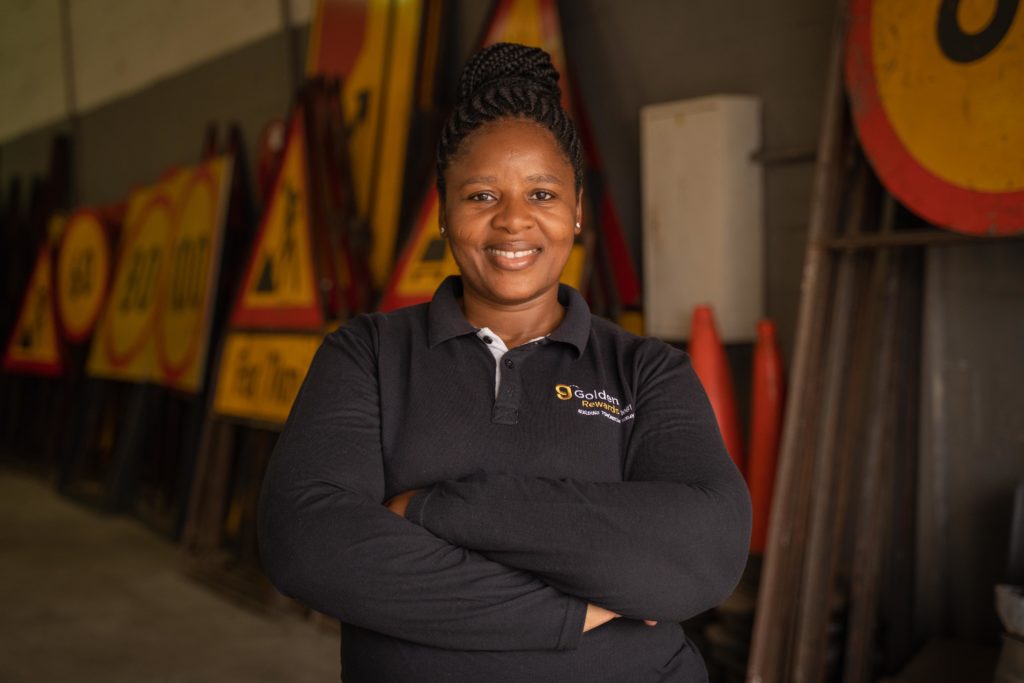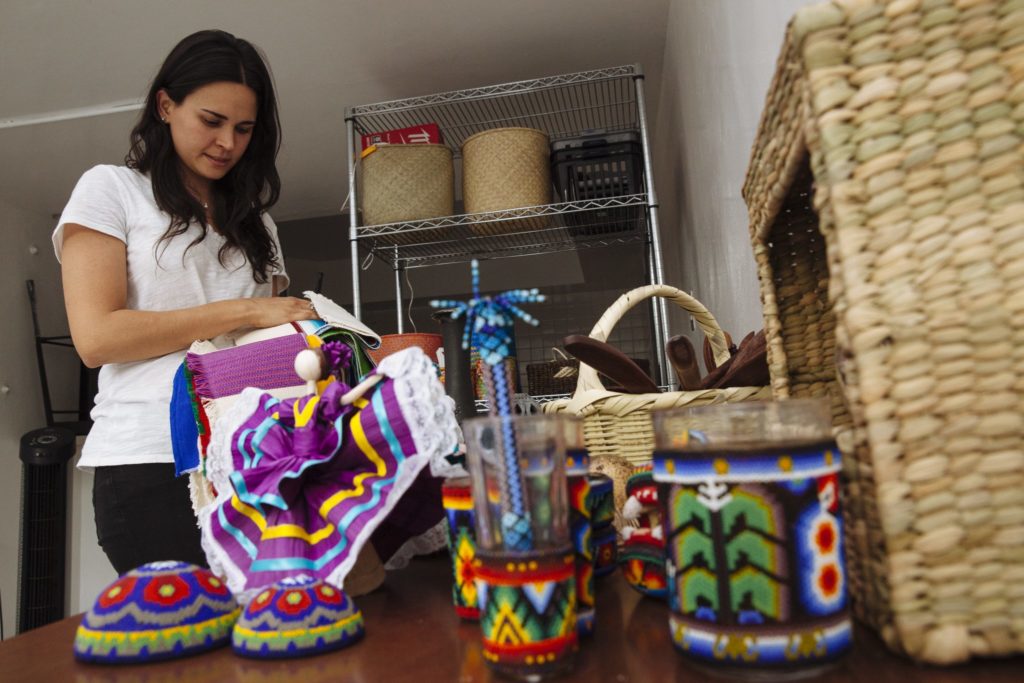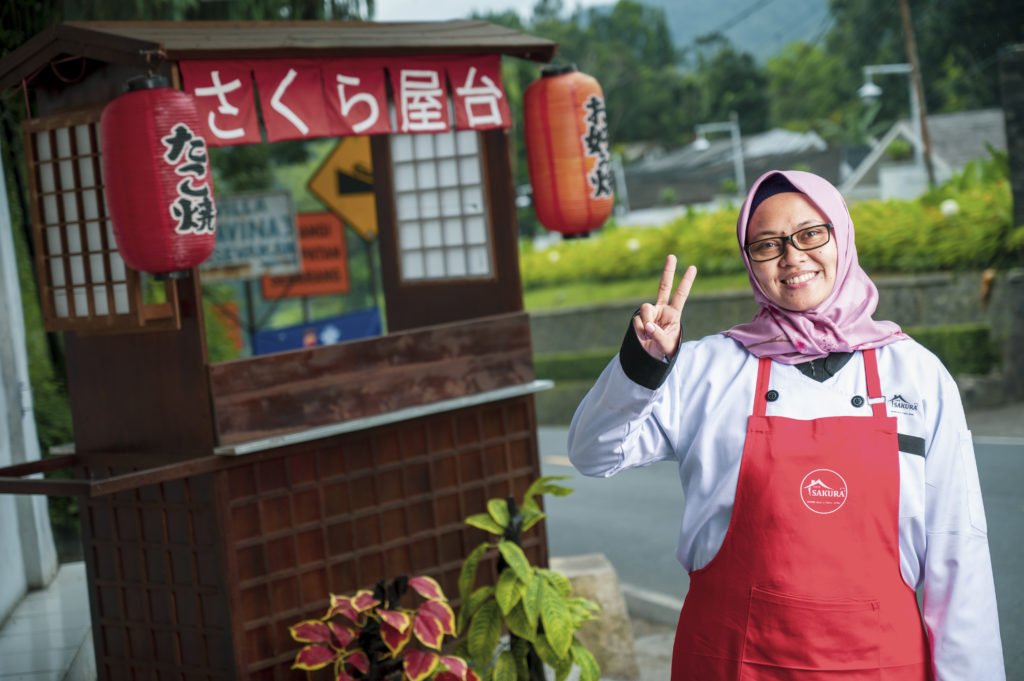For Women’s History Month, our Corporate Services and Partnerships Administrator Saudamini Sigdel explores the history of women’s entrepreneurship across the world, and our place in it…
Women entrepreneurs are at the heart of all our work at the Cherie Blair Foundation for Women. Our mission is to empower women to start, grow and sustain successful businesses, so they can redefine the future for themselves and their societies. This Women’s History Month, we would like to not only celebrate the history of women’s entrepreneurship but to acknowledge the uneven histories across time and space that form a key rationale for why we do what we do.
While women-led entrepreneurship has existed across the globe for centuries, its adoption into conventional practice did not take place at the same time everywhere. As such, the trajectory in growth of women’s entrepreneurship over the last century has been markedly different in the Global North versus the Global South.
In the West, a defining shift came in the form of the Second World War. With men conscripted for armed service, women became the backbone of many economies through their mass entry into the labour force. By stepping into factories, offices and laboratories in order to keep their countries going in a time of crisis, women inadvertently overcame their relegation to only the domestic sphere. This period also saw a boom in women’s entrepreneurship: in a bid to generate an independent source of income, many took to investing their talents in new businesses. These were often home-based ventures, leading to the growth of cottage industries in areas such as beauty and cosmetics, fashion, and food manufacturing.

After the war, this change proved to be lasting. Small enterprises were a way for women to continue their economic participation where formal labour jobs were again taken up by men, and they provided a means of sustenance for women left widowed, or with a partner too injured to return to the workforce. Those who had wider industry connections were also able to successfully grow and formalise their businesses, some of which—like Mattel and Estee Lauder —became household names. Over this period, women’s involvement in the paid workforce and as business leaders had become sufficiently normalised to pave the way for irreversible political and cultural shifts.
Less than two decades later, the advancement of women’s empowerment in the economy and the workforce had started becoming a mainstream idea. This was spearheaded by the ‘second wave’ of the feminist movement. The movement, at its peak in the 1960s and ‘70s, emerged from the grassroots in the West partially as a response to women’s economic vulnerability and changing roles following the end of the war.
The significant size and visibility of second wave feminism was responsible for creating key pieces of legislation that supported women’s economic empowerment. This marked a shift towards the formalisation of women-led businesses, with more capital available for budding women entrepreneurs and more enterprises able to become registered. Simultaneously, professional networks and support groups emerged to provide specific resources for women in business. Since then, women’s entrepreneurship has only grown. There are now countless examples of women who have launched businesses and become very successful. But, more than two decades into the 21st century, there are still many barriers—stubborn prejudices, discriminatory laws, disparities in access to finance, and more—that continue to put women entrepreneurs at a disadvantage compared to men.
In low and middle income countries, these disadvantages are often more starkly pronounced, and progress has been slower. Women’s entry into the workforce and into entrepreneurship was not accelerated by the Second World War in the same way as many Western countries, and advancing women’s economic participation has instead involved measured, tactical efforts from communities and institutions alike.
For many women entrepreneurs, particularly in low and middle income countries, owning a business doesn’t just stem from personal ambition but from necessity. Facing many barriers to work and other challenges, and often having to juggle many competing priorities like domestic labour, launching a business of their own has often been the way to secure an income and support their families. However, these businesses are likely to be informal and unregistered, and difficult to scale or sustain. Women entrepreneurs in rural communities face added difficulties in accessing finance, markets and networks. On top of this, gender discrimination creates constraints for women entrepreneurs seeking skills and resources as well as holding back confidence and self-belief.

As with any social change, the quest for gender equality and women’s empowerment has had to take place within the context of many bigger-picture social, political and developmental changes. For many low and middle income countries, this could mean the aftermath of the colonial era, poverty, poor infrastructure, conflict, climate change, and other political and financial volatility. This has meant that development efforts have historically been geared towards basic needs such as nutrition, healthcare and education before gender equality.
In the face of huge barriers, women entrepreneurs have continually strived for growth and their rightful place in the economy. At the same time, globalisation and the international exchange of ideas over time have also seen feminism—in its many waves and variations—morph into a global movement. Different feminist developments have emerged in their own right across low and middle income countries, with their own focuses, paces and impacts owing to the specific settings and dynamics they exist within.
Organic developments, grassroots activism and the growth of feminism championed the introduction of legislative and cultural changes to advance women’s entrepreneurship, and this was reciprocated within the development community. The Women in Development (WID) movement emerged in the 1960s as a response to the gaps in programmes for women’s issues in international development. This was crucial in flipping the narrative that women’s economic empowerment should be deprioritised in favour of other development issues, instead framing it as a catalyst for accelerating overall economic growth and fulfilling wider development objectives. Women’s participation in economic processes—including owning businesses—was shown to have a net positive impact on society. Not only did women’s empowerment improve health and educational standards at the family level, but it also extended outward by creating value, providing employment opportunities, and improving trade.
Since then, the movement has evolved to encompass the more intersectional Gender and Development (GAD) approach. This better recognises nuances in gender relations and aims to put women in the front seat of their own economic and socio-political development. International and local development organisations, including ourselves, have been working hard in conjunction with women in low and middle income communities to meet these objectives. Gender equality was a core target in the Millenium Development Goals of 2000-2015 and is now too among the Sustainable Development Goals of 2015-2030.
In 2016, the United Nations established the High-Level Panel on Women’s Economic Empowerment to launch a shared global agenda that accelerates women’s economic empowerment in support of these goals, with a focus on women’s entrepreneurship. The Panel identifies seven primary drivers to close the economic gender gap, and our own programmatic and advocacy work at the Foundation is situated within these.

Despite this progress, specific attitudes towards women in business and limited resources hold back women’s economic empowerment in many low and middle income countries, and not enough is being done to challenge these. Gender bias, for example, still seriously limits women’s entrepreneurial mobility: in our recent gender stereotypes research surveying women entrepreneurs in low and middle income countries, 70% said that gender stereotypes have negatively affected their work as an entrepreneur. Over half (56%) said that social approval or disapproval of different careers played a role in their choice of career. Plus, in a setting where women in business are typically underrepresented, existing or aspiring entrepreneurs have fewer role models and fewer opportunities to access knowledge and support through a wider network.
Despite these challenges, the efforts of democracy, activism, and developmental endeavours are ongoing. Plenty of stakeholders—from allies and advocates to governments to organisations of various sizes—have acknowledged the gap in women’s economic empowerment in low and middle income countries and the need to overcome it. It’s still estimated that it will take over 250 years to close the global economic gender gap, but many of us refuse to wait that long.
So, where does that leave us? At the Cherie Blair Foundation for Women, we’re proud to play an active role for women entrepreneurs in these countries, enabling them to be the drivers of their economic empowerment. Through our influencing and thought leadership work, we equip women entrepreneurs with relevant advocacy, influencing and leadership skills so they can better shape their local entrepreneurial environment. We also amplify women entrepreneurs’ voices globally, by sharing our evidence and their stories and solutions, and by advocating for policy and practice changes that will make the most difference to their businesses and lives. And with our flagship programmes, we have supported over 200,000 women in over 100 countries to start and grow successful businesses.
But our work is far from over. From 2020 to 2022, we’re directly supporting 100,000 more women in low and middle-income countries to start and grow successful businesses. The 100,000 Women Campaign calls on companies, business leaders and philanthropists everywhere to take action to close the global gender gap in entrepreneurship. We won’t wait the 250+ years it’s currently predicted for women to have economic equality worldwide, and we hope you won’t either. Whether as a participant, a supporter, an advocate or a partner, join us on our mission today!

